I have a database table that contains many attributes, one of which is controlled by a domain of acceptable values.
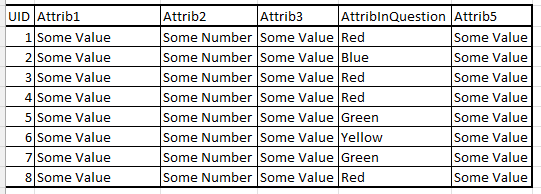 I have a list containing a unique list of these value
I have a list containing a unique list of these value
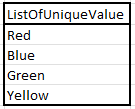 I want to step through this list and each time through the loop select just the records from the table that would be selected if the unique value were inserted into in query:
I want to step through this list and each time through the loop select just the records from the table that would be selected if the unique value were inserted into in query:
SELECT * FROM Table WHERE AttribInQuestion = WhateverColor
For instance, "Red" the first time through the loop would return:
 I've setup my Reader to read the SQL table I want to query, generated a List of my unique values, and created a TestFilter. The TestFilter works if I just type 'Red' into it, but I cannot figure out how to feed the filter a variable to save my life. I'm not asking about the looping (I've created a custom transformer for that), what I'm asking about is how to insert the 'Red' value into my filter using a variable?
I've setup my Reader to read the SQL table I want to query, generated a List of my unique values, and created a TestFilter. The TestFilter works if I just type 'Red' into it, but I cannot figure out how to feed the filter a variable to save my life. I'm not asking about the looping (I've created a custom transformer for that), what I'm asking about is how to insert the 'Red' value into my filter using a variable?
Thank you for any help you can provide.
K




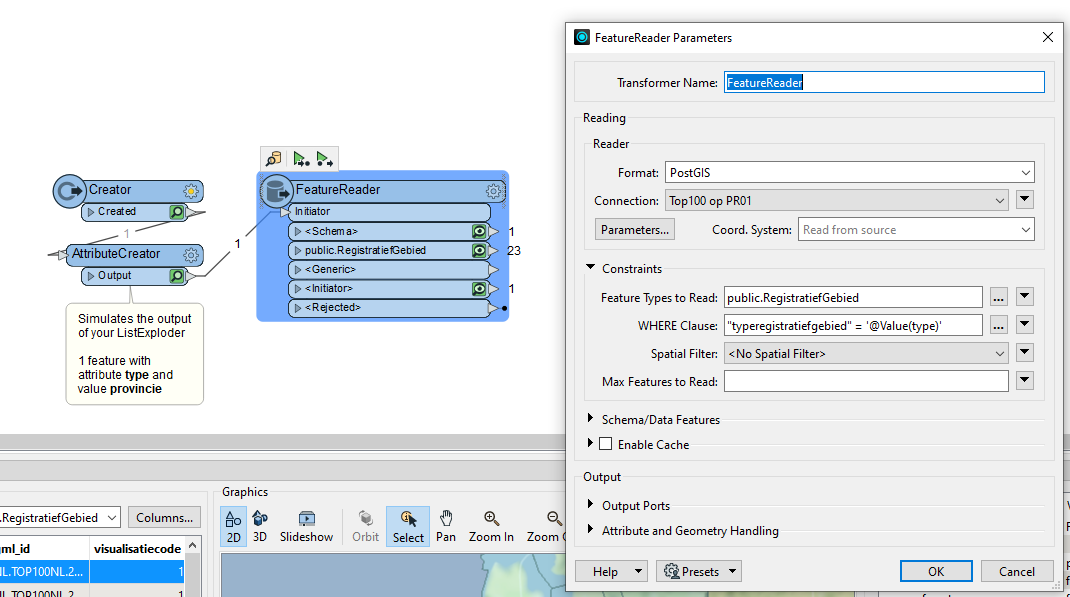 The output of my AttributeCreator is similar to your ListExploder, one or more features with an attribute value you want to use to select from the database.
The output of my AttributeCreator is similar to your ListExploder, one or more features with an attribute value you want to use to select from the database. 


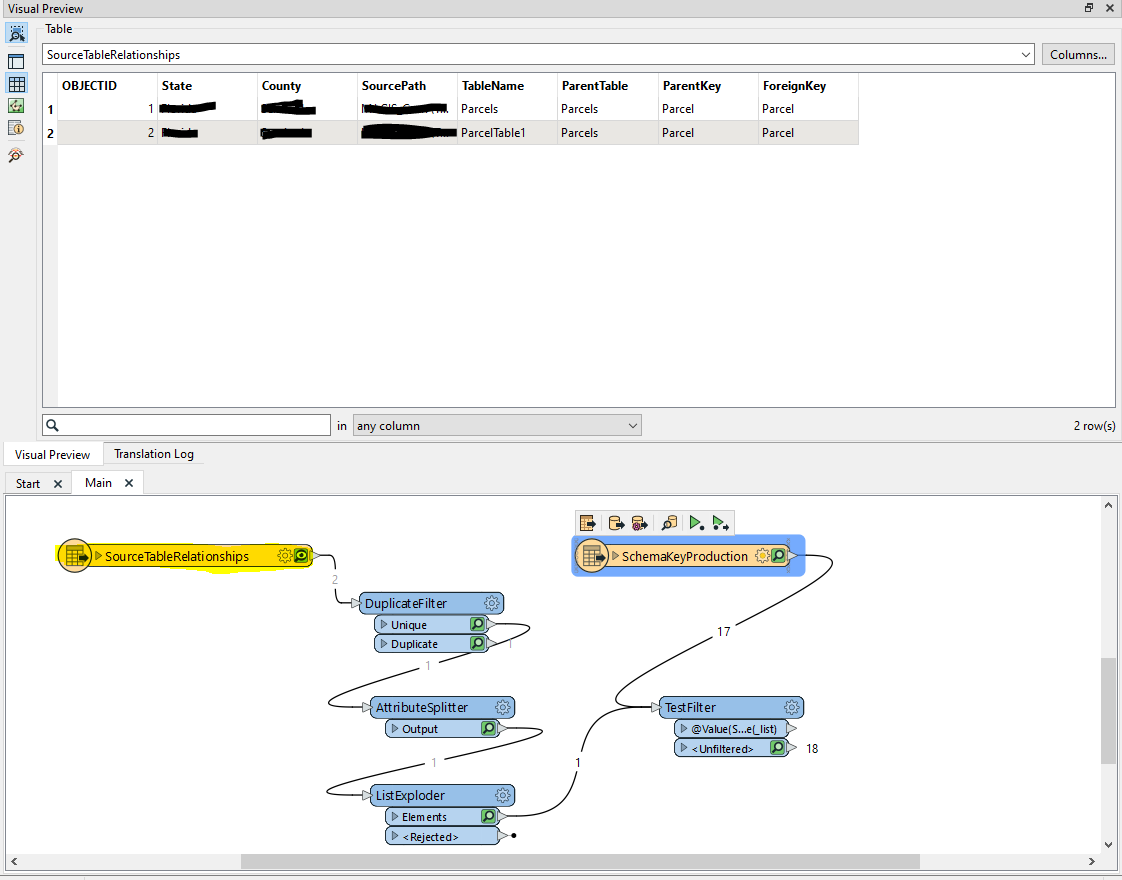 In this example I'm using an "esri geodatabase sde..." reader and I'm using the DuplicateFilter transformer to filter for the unique ParentTable name:
In this example I'm using an "esri geodatabase sde..." reader and I'm using the DuplicateFilter transformer to filter for the unique ParentTable name: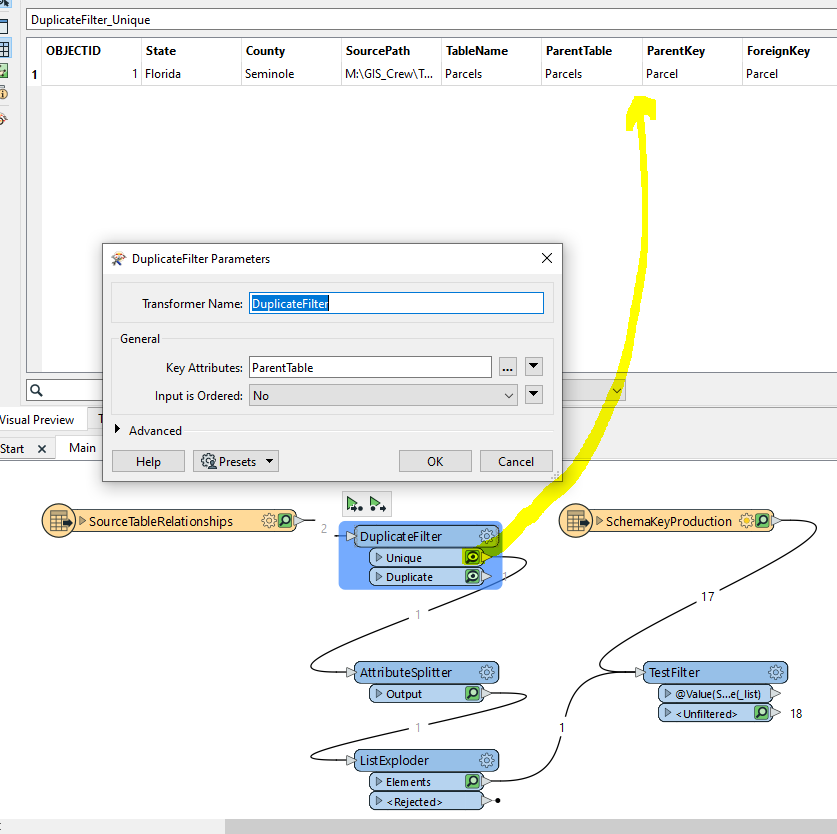 So far exactly what I want (I.E. the value "Parcels" is the only ParentTable value in my table so it constitutes all unique values in this case, but having one value will not be the norm, but looping can come after I figure this part out).
So far exactly what I want (I.E. the value "Parcels" is the only ParentTable value in my table so it constitutes all unique values in this case, but having one value will not be the norm, but looping can come after I figure this part out).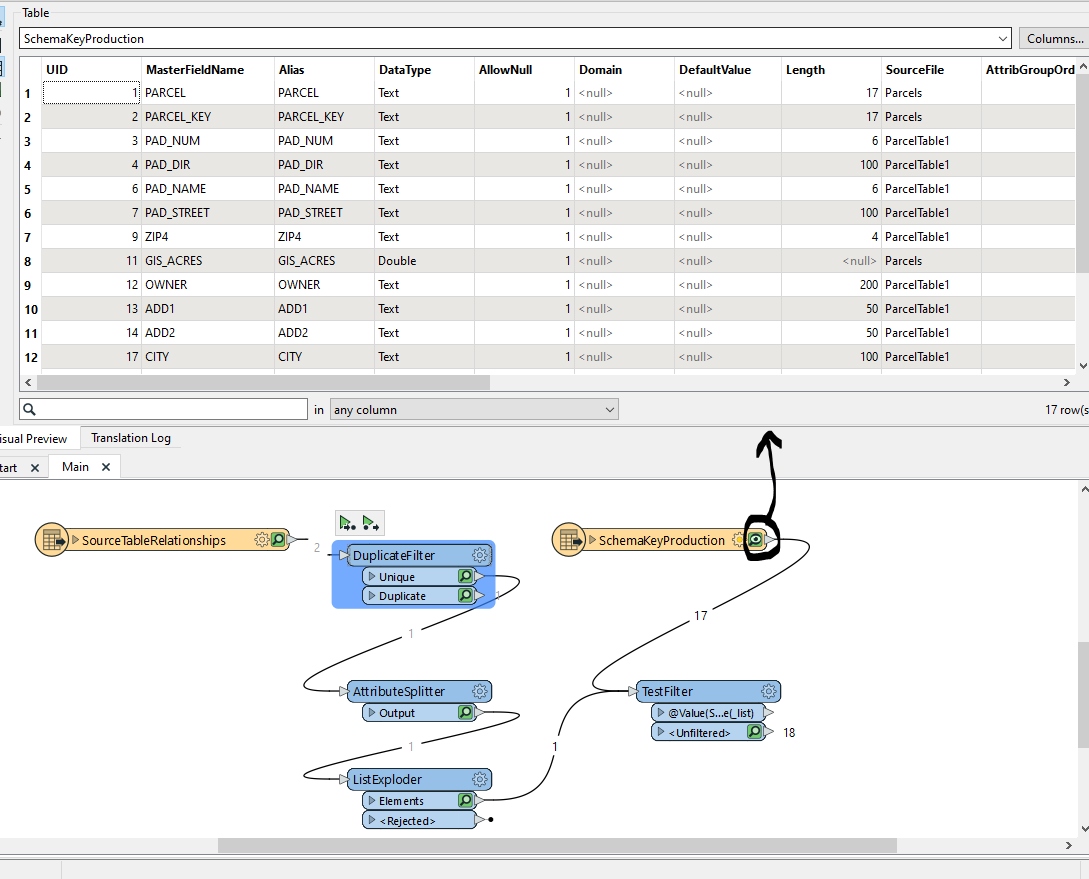 I want to use the value of the ParentTable attribute coming out of the Unique port in my DuplicateFilter (I.E. the value "Parcels") to query my SchemaKeyProduction table such that I only get the three records that would be returned if I typed this into SQL:
I want to use the value of the ParentTable attribute coming out of the Unique port in my DuplicateFilter (I.E. the value "Parcels") to query my SchemaKeyProduction table such that I only get the three records that would be returned if I typed this into SQL: